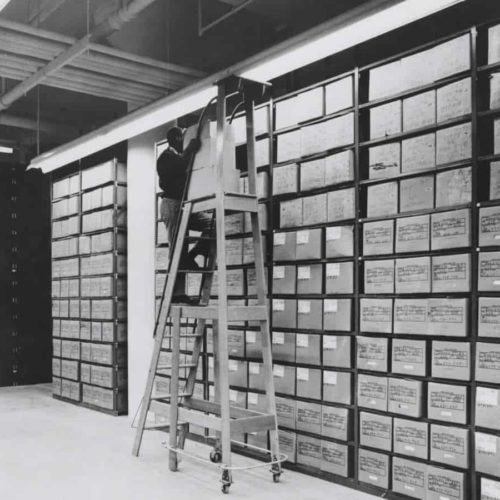Introduction
The Justice Department has been increasingly eager to prosecute officials for leaks of classified information, charging six individuals with disclosures that violate the Espionage Act just since the start of 2009. But at the same time, the government itself has lost track of hundreds of boxes filled with classified documents at its main records storage site, the Washington National Records Center.
According to a new report from the National Archives and Records Administration (NARA) Office of Inspector General, more than 1,500 boxes of classified documents have gone missing at the site, located in Suitland, Maryland. While some are “still occasionally being located,” the Archives’s office of records services has stopped its internal searching, the report said, and the affected agencies have been notified.
Among the missing records are 81 boxes with documents labeled Top Secret, Secret, and Restricted Data, among the highest classification categories. They were from the Office of the Secretary of Defense, the Navy, the National Imagery and Mapping Agency, the Energy Department, and other agencies. Restricted Data is a special category for data pertinent to nuclear weapons. Each box contains between 2,000 and 2,500 pieces of paper, states the IG’s report, which was first disclosed by The Washington Times.
These records weren’t stolen in an act of espionage. The IG places the blame for the loss of the boxes squarely on mismanagement by the records center, which is controlled by the Archives, an issue described in the report as “systemic.”
That conclusion seems beyond dispute. The new report, which is itself labeled “Official Use Only,” discloses that in two previous inventories there, in 1998 and 2004, boxes of classified materials were found missing. But the results were never written up in a report and “minimal corrective actions” were taken, it states.
An internal report at the records center in 2006 found 1,857 boxes of classified records were missing, including thirty classified Top Secret. NARA Inspector General Paul Brachfeld, the author of the new report, warned the Archivist of the United States in an unpublicized 2009 letter that the situation at WNRC was “unacceptable and potentially dangerous.”
“NARA is the custodian of the nation’s most sensitive materials,” Brachfeld’s letter said. “The status quo at WNRC fails to adequately serve NARA’ s customers, the taxpayers, or national security.” But as of March 2011, 1,540 boxes of classified documents remained missing, his report states. Many smaller violations have been reported as well, including “Secret” documents found unattended in a hallway, in the trash, or mailed improperly to the Department of the Navy.
The IG’s investigation, conducted between November 2007 and December 2010, was opened due to what the report described as “continuing security violations” at WNRC, which functions like a temporary holding center for documents that government agencies do not have room to store themselves.They are not part of the Archives’ permanent holdings. Their age can vary; while they generally are not contemporary, they can still include vital secrets, officials say.
The report assigns much of the blame to the WNRC’s use of a poor cataloguing system, which tracked when documents were moved. But it was not designed to track temporary withdrawals of records or even permanent records of less than “one cubic foot” worth of paper. If anyone borrowed a folder of documents for research, it would go unnoticed by the system. In 2009 the facility switched to a new system, ARCIS, but quickly decided the system did not have the capabilities needed to handle classified records.
Previous tracking systems relied on paper tracking slips, which could detach from boxes during transit, leaving the location of the box untraceable among the hundreds of thousands of boxes stored at WNRC. There is hope that a new barcode system will help prevent the future loss of boxes.
“There does seem to be an honest, good-faith effort to address the deficiencies there,” Brachfeld said in an interview. He said records officials are continuing to try to untangle their cataloguing discrepancies, and that some of the boxes thought to be missing might turn out to be misfiled, or to have been returned to the agencies in question without being logged out.
But Brachfeld added that “I continue to think that building is not suitable” as a records center, describing it as an old warehouse and “a retrofitted factory” that does not meet the government’s need for secure storage. His view was evidently shared by records-keeping officials who told him in 2008 that “segregating classified and unclassified material is not an affordable option” there.
“The situation at WNRC is disconcerting to say the least,” according to Steven Aftergood of the Project on Government Secrecy at the Federation of American Scientists. “Preservation of the historical record is the primary mission of the National Archives, and misplacing hundreds or thousands of boxes of documents is inconsistent with that function. It’s a disservice to the nation and a violation of the public trust.”
Read more in National Security
National Security
What would your Pentagon budget look like?
Join the conversation on the public’s agenda for military spending
National Security
Pentagon failed to protect whistleblowers
Investigators routinely disregarded rules while rejecting complaints of reprisals for reporting waste, fraud and abuse



Join the conversation
Show Comments